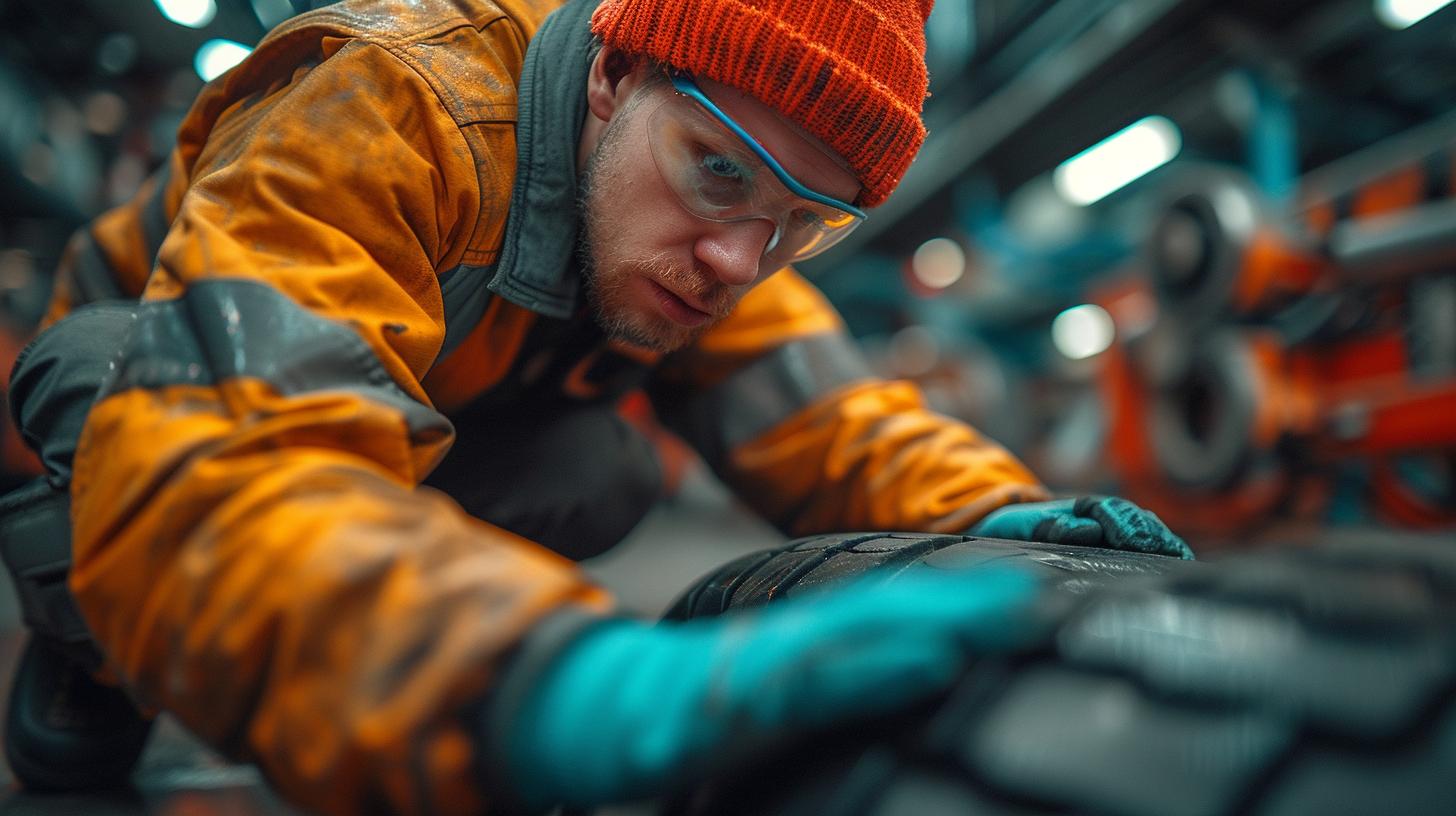Understanding the critical role that ground power unit parts play in aviation is essential to appreciating the smooth process of airport ground operations. Ground power units, often referred to as GPUs, are integral components at airports across the globe. Their purpose lies in supplying essential energy to aircraft while they are on the ground.
GPUs represent the unsung heroes of ground aviation operations, providing power to various systems within an aircraft when its engines aren’t running. This covers everything from routine maintenance inspections and system checks to powering up onboard facilities for maximum passenger comfort during boarding and disembarkation. Without these vital units, airlines would struggle to maintain efficient workflows and ensure optimal service levels.
In essence, these units form a complex web of carefully constructed parts, each playing an essential role in achieving total functionality. Understanding their individual functions sheds light on why maintaining and upgrading ground power unit parts is crucial for ensuring continued efficient operation at airports worldwide.
This article aims not only at explaining thoroughly about GPUs but also emphasizing their importance in managing energy efficiently and reducing carbon emissions – a current key objective within the global aviation industry. Stay tuned as we delve deep into this crucial aspect of airport infrastructure.
Explore the Core
Understanding the Components of a GPU
Ground Power Units (GPUs) can be seen as the crucial lifeline for parked aircraft. Made up of multiple essential components, the symbiotic relationship between ground power unit parts ensures the successful operation of aircraft on the tarmac. Understanding these components can help in identifying operational faults and refining power efficiency.
A key component of any GPU is the dynamo (also known as a generator). It is generally an alternator that converts rotary mechanical energy into electrical energy which powers various aircraft systems when stationary. One of the main reasons why this part is vital is because it eliminates the need for an aircraft to use its own fuel while parked, saving resources and reducing emissions.
The Role of Transformer Rectifiers
Now, since many aircraft systems require direct current (DC), the AC produced by a generator alone isn’t compatible. Therefore, another significant feature among ground power unit parts is transformer rectifiers. They convert an alternating current (AC) generated by the dynamo into direct current (DC). The stability and quality of this conversion directly impact flight safety parameters such as navigation and communications equipment within the plane.
The cooling system also has an equally important task in maintaining optimal functioning levels of GPUs. Much like how our bodies overheat after strenuous activities, GPUs generate large amounts of heat during operations due to electrical resistance and process inefficiencies. This buildup needs to be cooled down effectively to prevent component damages or worse, fires. Thus, cooling fans or radiators come into action here, circulating coolant around heated parts to dissipate heat away from them.
A Focus on Control Panels
Lastly, let’s not forget about control panels – they may not produce or transform electricity like above mentioned components but have their unique significance in managing and supervising GPU functions effectively. From turning on/off units to regulating output power suitable for individual aircraft requirements, control panels form the sensory and operational hub of ground power units, tracking unit performance and indicating possible malfunctions.
Understanding the function and alerts on these control panels can dramatically reduce the diagnoses time when troubleshooting faults within ground power unit parts.
In a nutshell, all these major components work in unison to provide reliable power needed by aircraft on the ground. Each part’s critical role highlights the importance of regular inspections and maintenance to keep GPU systems running efficiently.
Powering Up
Dynamics of Ground Power Unit
Ground Power Units (GPUs) are an integral piece of equipment in the aviation industry. They serve as lifelines to aircraft on the ground, providing vital electrical power when engines are turned off between flights. To understand how this process occurs, we need to consider the major ground power unit parts that work together seamlessly to keep aircraft systems up and running.
Firstly, at the heart of every GPU is a generator or alternator that actually produces electricity. This generator is powered by either a diesel or petrol engine, much like you would find in your car but usually larger. Elaborate cooling systems are also one of the crucial sets to prevent overheating during extensive use.

Distribution of Electricity
Once electricity is generated by a GPU, it’s further directed by a rectifier to power devices within an aircraft that run on direct current (DC). On the other hand, some aircraft amenities require alternative current (AC). In such cases, inverters come into play converting DC from the GPU into AC as per requirement. It’s important to note that not all GPUs have inverters; hence they can only provide DC power.
Furthermore, sophisticated control systems-another important element among ground power unit parts-are used to moderate output power levels. These are particularly crucial when handling sensitive electronics onboard an airplane that can be adversely impacted by fluctuations in voltage.
Efficiency and Safety: Key Aspects
The efficiency and safety measures provided by GPUs cannot be overstated. An overload protection system is often in place to prevent damage due to excessive load situations which ensures sustained operational integrity for all connected components within an airplane.
Moreover, GPUs consist of mobility parts too: wheels and handles if mobile or firm base if stationary-based design buoys overall operations’ flexibility across varied airport terrains. Whether they are situated at smaller regional airports, or serving the top airlines at the major international hubs, GPUs are the silent workhorses maintaining critical power supply to planes on the ground.
Understanding the complex interplay of ground power unit parts and how they contribute to creating this safe and efficient system is key in appreciating their role in modern aviation.
The Heart of Ground Operations
Ground power units (GPUs) fulfill a vital role in the efficient operation of modern airports, playing a central function in safe ground operations and ensuring a seamless experience for travelers. GPUs, through their collection of interconnected ground power unit parts, provide the necessary electricity to aircraft on the ground. This includes powering all onboard systems when the main engines are turned off, providing electricity to auxiliary systems such as lighting and air conditioning, and enabling pre-flight systems checks.
Modern airports heavily rely on these integral machines which handle hundreds or even thousands of flights daily. Managing energy efficiently is paramount within such bustling environments; this is where GPUs rise to the occasion. Operated either from a fixed electrical source via cable or as mobile models powered by diesel generators or batteries, they offer significant savings on fuel costs and a notable decrease in carbon emissions. This mitigates the ecological impact made by large-scale air operations.
| Airport | Number of Installed GPUs |
|---|---|
| Singapore Changi Airport | 700+ |
| Los Angeles International Airport | 500+ |
| Dubai International Airport | 600+ |
These values highlight how crucial robust GPU systems are – all thanks to their dynamic ground power unit parts working cohesively – in efficiently powering the heart of ground operations across bustling airports around the globe.
Troubleshoot and Maintenance
Ground power units (GPUs) are complex machines that require regular maintenance and prompt troubleshooting in case of any operational issues. Some common problems experienced with GPUs include voltage irregularities, overheating, and part wear. These can often be attributed to the condition of the ground power unit parts, hence the importance of regular check-ups cannot be stressed enough. During these examinations, particular attention should be given to three key components: the engine, generator, and cooling system.
The primary source of propulsion for a GPU is its internal combustion engine. Therefore it’s necessary to regularly inspect this component for lubrication levels, belt tension, fuel filter debris and overall cleanliness. On some occasions, signs of progressive wear in certain ground power unit parts such as piston rings might warrant their early replacement to prevent further damage or loss in performance efficiency.
Next is the generator which converts mechanical force derived from the engine into electric energy for powering onboard systems of an aircraft while it’s grounded. Apart from basic cleanliness requirements and timely oil changes, built-up carbon deposits on brushes or slip rings could disrupt generator output capacity necessitating immediate cleanup or part replacement.

Lastly but equally pivotal are its cooling system components which include radiator fan blades as well as coolant temperature sensors needing periodic inspections alongside general leak checks within connecting hoses or fittings. It is worth noting that any escalated temperature levels beyond certain thresholds provided by GPU manufacturers could cause significant damages not just within itself but also towards connected aircraft making it a top-priority concern during routine preventative measures.
| GPU Component | Key Maintenance Aspect |
|---|---|
| Engine | Lubrication Levels, Belt Tension Check & Fuel Filter Inspection |
| Generator | Cleaning Carbon Deposits on Brushes/Slip Rings & Oil Changes |
| Cooling System | Temperature Sensors, Fan Blade and Leak Checks |
Ultimately, the operating life of your GPU extends considerably when all its ground power unit parts are regularly scrutinized and promptly addressed for any potential issues. By adhering to a timely maintenance schedule, you can ensure that this crucial piece of equipment continues running smoothly, always ready to meet the demanding needs of aircraft ground operations.
Future Prospect
Ground Power Units: A Glimpse Into the Future
The current generation of ground power units (GPUs) has significantly evolved from the mechanical beasts of the past. Technological advancements are propelling this evolution, leading to faster, more efficient, sustainable means of powering aircraft during the ground phase of their operations.
One emerging trend is a move towards ecologically-friendly GPUs. Traditional ground power unit parts are increasingly being phased out or adjusted for newer models that support reduced energy consumption and lower carbon emissions. Thus, it’s not uncommon for airports to utilize:
- Eco-efficient GPUs: These units operate on technology that reduce CO2 emissions and noise pollution.
- Hybrid GPUs: Incorporating both diesel-driven generator and battery pack, these units optimize performance while minimizing environmental impact.
- Electric/ Battery-powered GPUs: These GPUs are solely powered by rechargeable batteries, eliminating the use of fossil fuels.
- Solar-powered GPUs: Though still a novelty in many regions, solar-powered units harness the sun’s energy to produce electricity, offering an infinite source of clean energy.
Despite this shift towards greener alternatives, durability and reliability remain crucial; hence keeping certain traditional ground power unit parts intact is still common practice.
Not Just About Powering Aircrafts Anymore
Another significant change in GPU technology is how units play multi-functional roles rather than only providing power to aircraft on the tarmac. Modern GPUs are now equipped with advanced features such as integrated diagnostic tools for quick troubleshooting when issues arise. As part of onboard system health checks they can assess aircraft systems while supplying power.
Further innovations include:
- GSE Data Management Systems: Helps track fuel usage and other GPU performance metrics for better operational efficiency
- Automated Digital Controls: Promote easy and error-free operation of GPUs
- Modular Design for Easy Upgrades: As technology evolves, new modules can be added to upgrade the GPU’s capabilities without replacing the entire unit.
Setting the Stage for the Future
The end goal is to develop a fully autonomous ground handling process wherein smarter, more sophisticated GPUs will be key players. They will not only power airplanes but also contribute valuable data insights for better airport operations management.
So although we’re witnessing remarkable advancements in GPUs today, they remain a continually evolving industry still met with numerous potential updates. Future researchers and manufacturers would do wise to ensure that their innovations are sustainable and retain backwards compatibility with traditional ground power unit parts.
Conclusion
From the critical role that ground power units play in airport ground operations to the overarching importance of maintaining and upgrading ground power unit parts, it is apparent that GPUs are undeniably indispensable. They are integral to powering aircraft efficiently and sustainably when grounded, contributing significantly to reducing carbon emissions and managing energy in a more responsible fashion.
This underscores the primary position they hold as the untiring workhorse of aviation, diligently ensuring that aircraft remain operative and ready throughout their tenancy on ground.

Remembering their core functions leads us back to appreciating how each part of the ground power unit seamlessly collaborates to catalyze its performance. Looking after these parts through regular maintenance, timely repair or replacement whenever necessary becomes imperative for sustaining their overall longevity and proficiency. This is particularly relevant in a sector like aviation where any halt or malfunction can result in significant delays which could inevitably impact business operations and passenger satisfaction.
Looking ahead, we see fascinating potential for improvements in GPU technology. Whether it’s a contingency toward more sustainable, battery-powered units or advancements aimed at improving efficiency or reliability of existing models, it is clear that GPUs will continue to evolve alongside global shifts in technology and sustainability practices.
The focus remains on not only empowering aviation with unerring ground support but also creating an ecosystem wherein this support aligns with global needs for sustainability and energy efficiency. Above all, the discourse underscores the fact that none of these future successes may be accomplished without attention to care and routine maintenance of ground power unit parts.
Frequently Asked Questions
What Are the Components of Ground Power Unit?
A Ground Power Unit (GPU) comprises several critical components that enable its function. The primary elements are the power producing engine, alternator or generator for converting mechanical energy into electrical power, and a control panel to supervise and regulate the unit’s operations.
Other components include the cooling system to prevent overheating, fuel system for running the engine, and various safety mechanisms like circuit breakers.
Is a Ground Power Unit AC or DC?
A Ground Power Unit can be either AC or DC based on its design and purpose. It essentially provides either alternating current (AC) or direct current (DC) voltage depending on what is required by the aircraft it services. Typically, larger commercial airplanes utilize AC GPUs while smaller private or business aircraft use DC GPUs.
What Is the Difference Between the Ground Power Unit and the Air Start Unit?
A Ground Power Unit and an Air Start Unit provide different services though both are ground support equipment used in aviation.
The primary function of a GPU is to supply power to an aircraft when its engines aren’t operating whereas an Air Start Unit’s job is to supply compressed air to start the airplane’s engines during preflight procedures.
How Many Types of Ground Power Units Are There?
There are essentially three types of Ground Power Units in operation: Diesel-electric generators, battery-powered GPUs, and combination units that deliver both functions simultaneously if needed. Diesel-electrified versions produce alternating current from a diesel-powered generator set while battery-powered units provide direct current from charged batteries aboard.
What Is the Maintenance of the Ground Power Unit?
Maintenance of Ground Power Unit includes regular inspections for any visible damage or wear, monitoring engine oil levels and coolant levels, ensuring all connectors and cables are intact without brakes or corrosion, testing operation under load conditions regularly to ensure peak performance when required etc., Regular filter changes along with periodic service from certified technicians would help prolong life span of this substantial investment.
What Is the Difference Between Auxiliary Power Unit and Ground Power Unit?
The major difference between Auxiliary Power Unit and Ground Power Unit lies in their placement and utilization.
While a GPU is mounted on ground serving as external power source when airplane engines are off for maintenance purposes mostly; an APU is small engine typically placed at the tail end of airplane supplying necessary power for air conditioning or electric needs when main engines are off, but aircraft is still operational and loaded.
What Is a Grounding Component?
A grounding component provides a protective path for electrical current to follow in case of a short circuit or other fault. This pathway ensures any excessive current gets directed into the earth instead of causing harm to sensitive components or creating fire hazards. It essentially acts as a safety measure in electrical systems, preventing equipment damage and human injuries.
What Is the Ground Component of a Circuit?
The ground component within a circuit serves as common point of return for electric current. It ties circuit’s entire electrical flow back to earth, balancing out system and strengthening its safety profile by limiting potential for unforeseen voltage spikes that can be damaging. In addition, it assists with stabilizing voltages under various load conditions ensuring predictable behavior.
